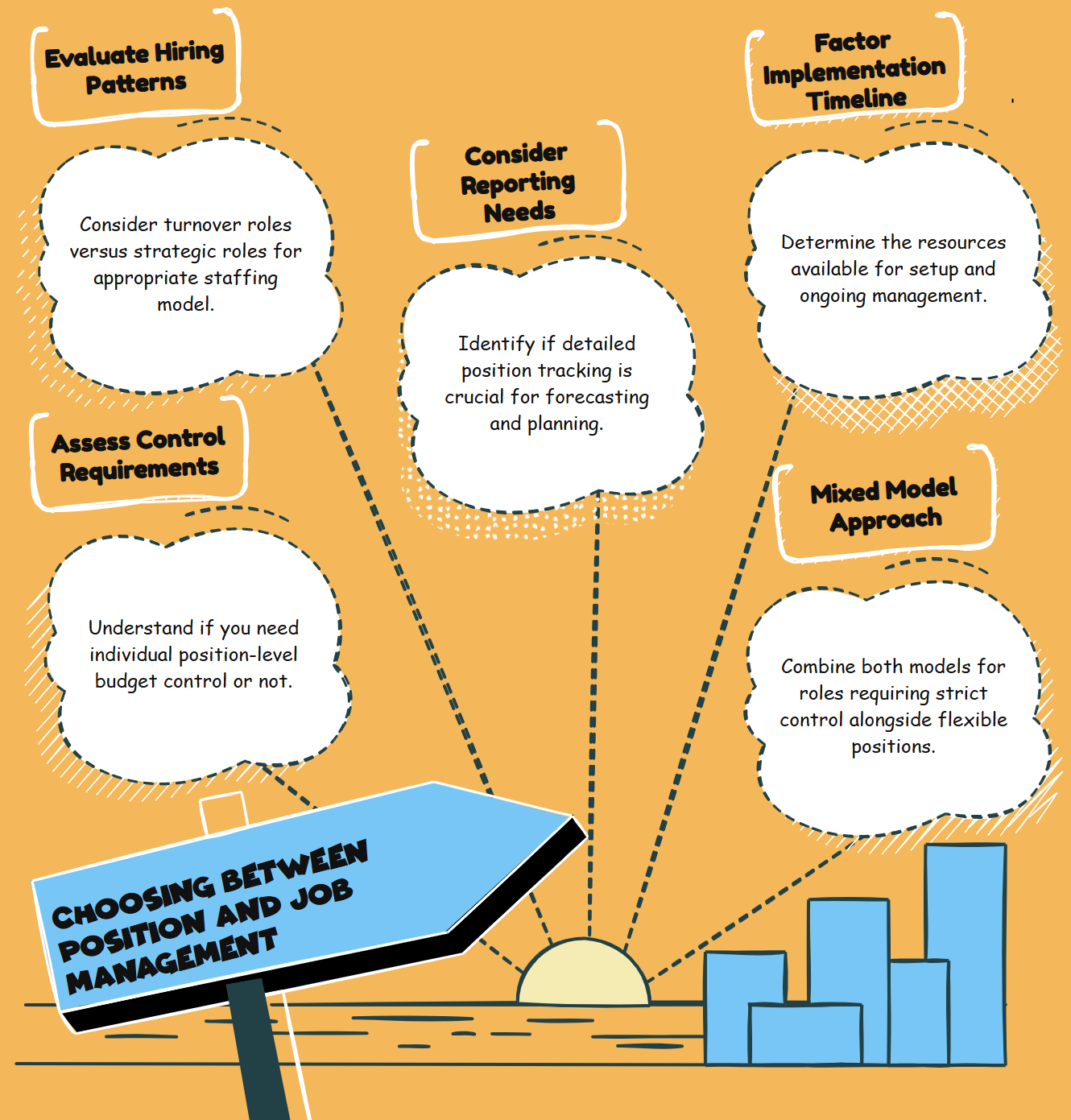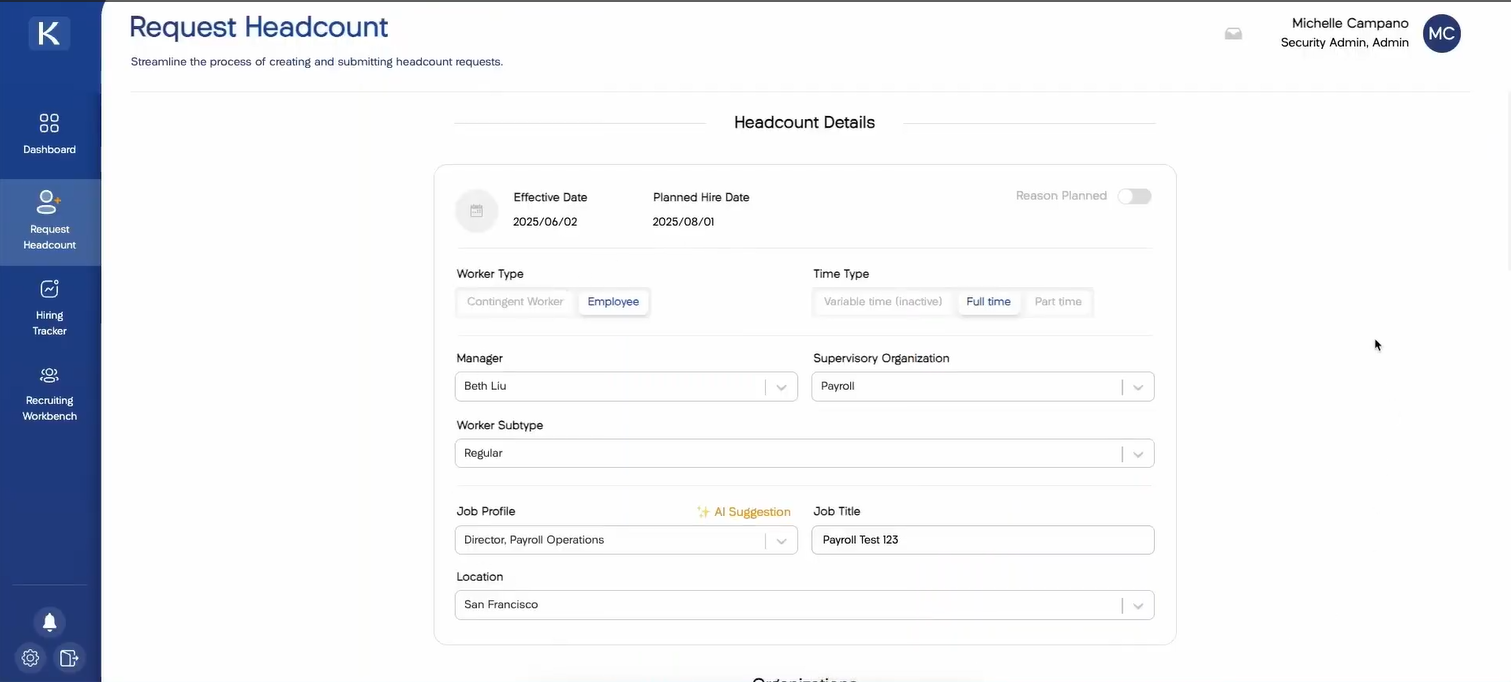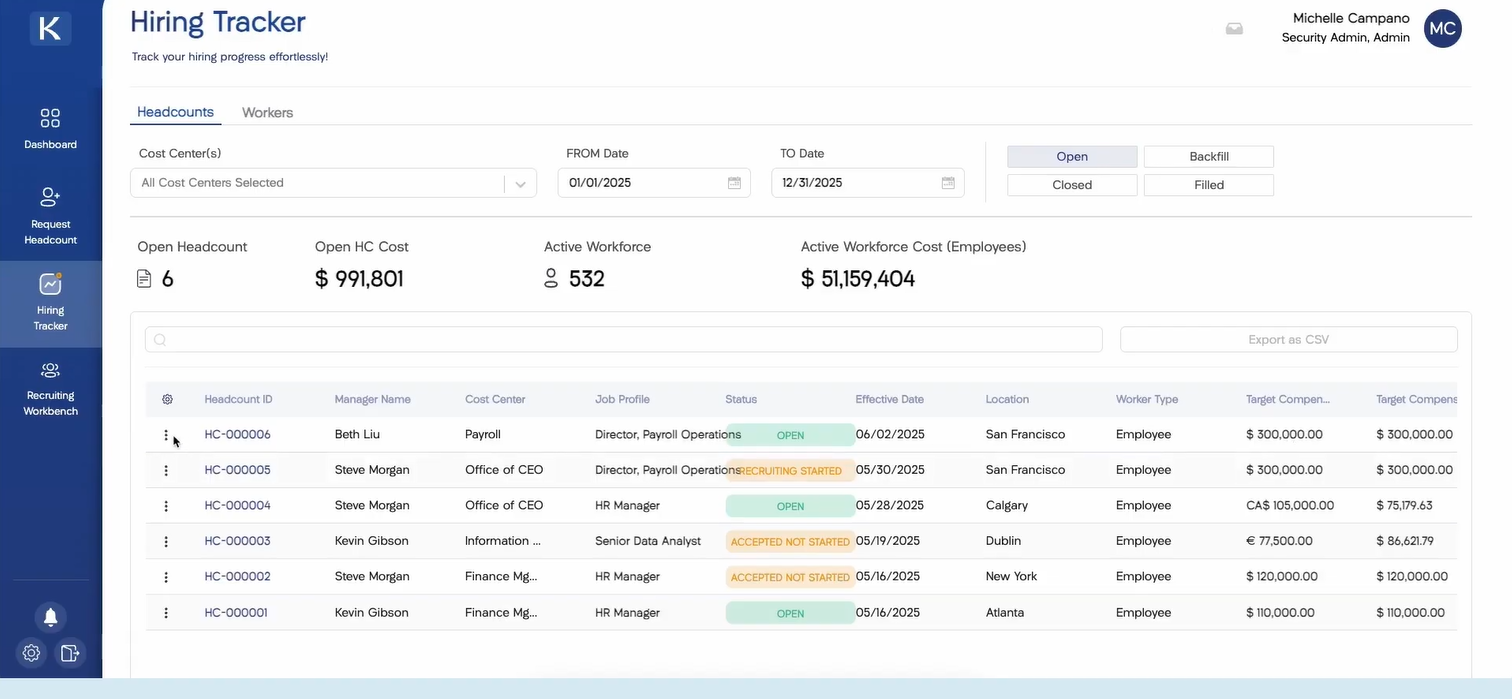Choosing Workday Position Management vs. Job Management: Freedom from your Staffing Model
Here's the question that stops Workday implementations dead in their tracks: "Should we use position management or job management?" Teams spend days and sometimes weeks researching, debating, and second-guessing this decision while their Workday headcount management rollout gets delayed month after month.
The irony? Most organizations agonizing over this choice don't actually need to pick just one. The "position vs. job management" dilemma has become an artificial barrier that prevents teams from focusing on what really matters—building efficient headcount processes that serve their business goals.
The truth is simpler than the industry makes it seem: both approaches work when properly implemented, and the best organizations often use elements of both. Here's how to cut through the confusion and make a decision that moves your Workday headcount management implementation forward with confidence.
What are Position and Job Management in Workday?
Position management is Workday's most robust staffing model. It requires you to create, define, and approve positions before filling them. Think of it like designing apartment units—you can't house tenants without available units, and building new floors requires proper planning and budget approval.
Conversely, job management provides maximum flexibility by allowing unlimited hiring within supervisory organizations without predefined positions. You just set up the rules, then hire people under them. It's like having a flexible workspace where teams can expand and contract as needed without architectural constraints.
The key difference: position management offers granular control through pre-defined restrictions, while job management prioritizes hiring speed and organizational flexibility.
The Position vs. Job Management Confusion Crisis
Organizations frequently attempt to switch between staffing models because they discover their initial choice doesn't match their actual operational needs. Or at least give it serious thought and consideration, only to realize that switching staffing models is nearly equivalent to a reimplementation of Workday.
For example, a manufacturing company might start with position management for control, then realize their high-turnover production lines need job management flexibility, while their leadership roles still require position-level restrictions. These can pose several issues.
These Switches Are Expensive and Disruptive
Converting from job management to position management requires creating individual positions for every role, reconfiguring security, and retraining users. Going the other direction means losing position-level tracking and reporting capabilities that Finance and HR teams have grown to depend on.
The Real Cost is Technical AND Organizational
When teams spend months implementing one approach only to discover it doesn't work for their business model, user confidence in the system plummets. Managers who struggle to learn position creation workflows feel frustrated when those processes change. HR teams lose credibility when they can't provide consistent headcount reporting.
User Adoption Suffers Most When the Staffing Model Feels Forced Rather Than Natural
If your high-growth engineering team needs to hire quickly but position management slows them down, they'll find workarounds. If your Finance team needs position-level budget control but job management can't provide it, they'll maintain shadow spreadsheets. The wrong choice creates resistance that undermines your entire Workday headcount planning implementation.
The Complete Decision Framework for Position vs Job Management
The best way to choose between the two staffing models is to stop treating this as a binary choice and start matching your staffing model to your actual business needs. Here’s a framework to make confident decisions based on your organization's specific requirements:
1. Assess Your Control Requirements First
Position management is non-negotiable if you need:
Individual position-level budget control
Hiring restrictions based on personal qualifications
A skills-based framework
Detailed position history tracking
These capabilities simply don't exist in job management.
2. Evaluate Your Hiring Patterns by Department
High-turnover roles in manufacturing, retail, or call centers often benefit from job management's unlimited hiring flexibility. Strategic roles in leadership, specialized functions, or positions requiring security clearances typically need position management's granular control.
3. Consider Your Reporting and Planning Needs
Finance teams requiring position-level forecasting, workforce planning based on open positions, or detailed headcount variance analysis need position management's robust tracking capabilities. Organizations focused on headcount totals rather than position-specific planning can succeed with job management.
4. Factor In Your Implementation Timeline and Resources
Position management requires more upfront configuration, training, and ongoing maintenance. Job management gets you operational faster but provides less long-term flexibility for complex organizational needs.
5. Use a Mixed Model Approach for the Most Success
Apply position management to roles requiring strict control (leadership, specialized functions, roles with security requirements) and job management to high-volume, high-turnover positions where flexibility matters more than granular control.
For example, we heard this directly from an HR professional in our community during a discussion about Workday headcount management and position management challenges: "We started with position management for all roles, and we are an industry with high turnover. We switched to job management for direct labor positions and position management for managers and any indirect labor position that requires security access."
The framework isn't about finding the "perfect" choice—it's about making an informed decision that serves your primary business objectives while minimizing operational friction.
Eliminate the Position vs Job Management Dilemma with Flexible Headcount Management Software
Using flexible headcount management software like Kinnect solves the position vs. job management confusion by working seamlessly with whatever architectural decisions you've made in Workday. Instead of forcing you to choose between control and flexibility, we provide streamlined Workday headcount management software that enhances both approaches.
Unified Headcount Management Dashboard
Kinnect’s headcount management dashboard works regardless of your underlying staffing model. Whether you're using position management, job management, or a mixed approach, managers see the same intuitive interface for requesting headcount. Finance gets consistent budget visibility, and Recruiting gets standardized workflows—all without needing to understand the technical differences between staffing models.
Staffing Model Decision Flexibility
We eliminate the staffing model decision paralysis entirely. Organizations can start with whatever staffing model makes sense for their immediate needs, knowing that Kinnect will adapt as they grow and evolve. If you need to switch from job management to position management later, our platform continues working seamlessly while you make the technical transition in the background.
For example, a fast-growing startup might begin with job management for speed and flexibility. As they mature and need more budget control, they can gradually shift to position management for senior roles while keeping job management for high-turnover positions. Throughout this evolution, their teams use the same Kinnect workflows without disruption.
Flexible Configuration Management
Our approach transforms staffing model decisions from permanent, high-stakes choices into flexible, reversible configurations. This eliminates the fear of making the "wrong" choice that paralyzes so many implementations, allowing organizations to move forward with confidence while maintaining the ability to adapt as their needs change.
The Result: Freedom from Staffing Model Second-Guessing
The biggest relief organizations experience when using Kinnect is freedom from second-guessing their staffing model choice. Instead of spending months debating position vs. job management, they focus on what matters: building great teams efficiently.
HR teams stop worrying about whether they chose the "right" architecture and start delivering value through streamlined processes. The result is Workday position management that actually serves your business goals rather than constraining them, regardless of which staffing model you've chosen.
You Can Stop the Staffing Model Confusion and Start Managing Headcount Effectively
The position management vs. job management decision doesn't have to paralyze your team or define your success. Both approaches can work effectively when properly implemented and supported with the right tools and processes.
The organizations that succeed focus on their business outcomes—efficient hiring, accurate budgeting, streamlined workflows—rather than getting stuck in architectural debates. They choose a staffing model that serves their immediate needs while building flexibility for future changes.
At Kinnect, we've helped organizations navigate these exact decisions across hundreds of Workday implementations. Our team brings 50+ years of collective experience in Workday headcount planning and understands that the right answer isn't about choosing the "perfect" staffing model—it's about building processes that work regardless of your architectural choices. We eliminate the complexity so you can focus on what matters most: efficient headcount management that grows with your organization.
Ready to stop the confusion and start managing headcount effectively? Book a demo today to see how Kinnect transforms Workday headcount planning regardless of your staffing model and gives you the control and flexibility your organization actually needs.




